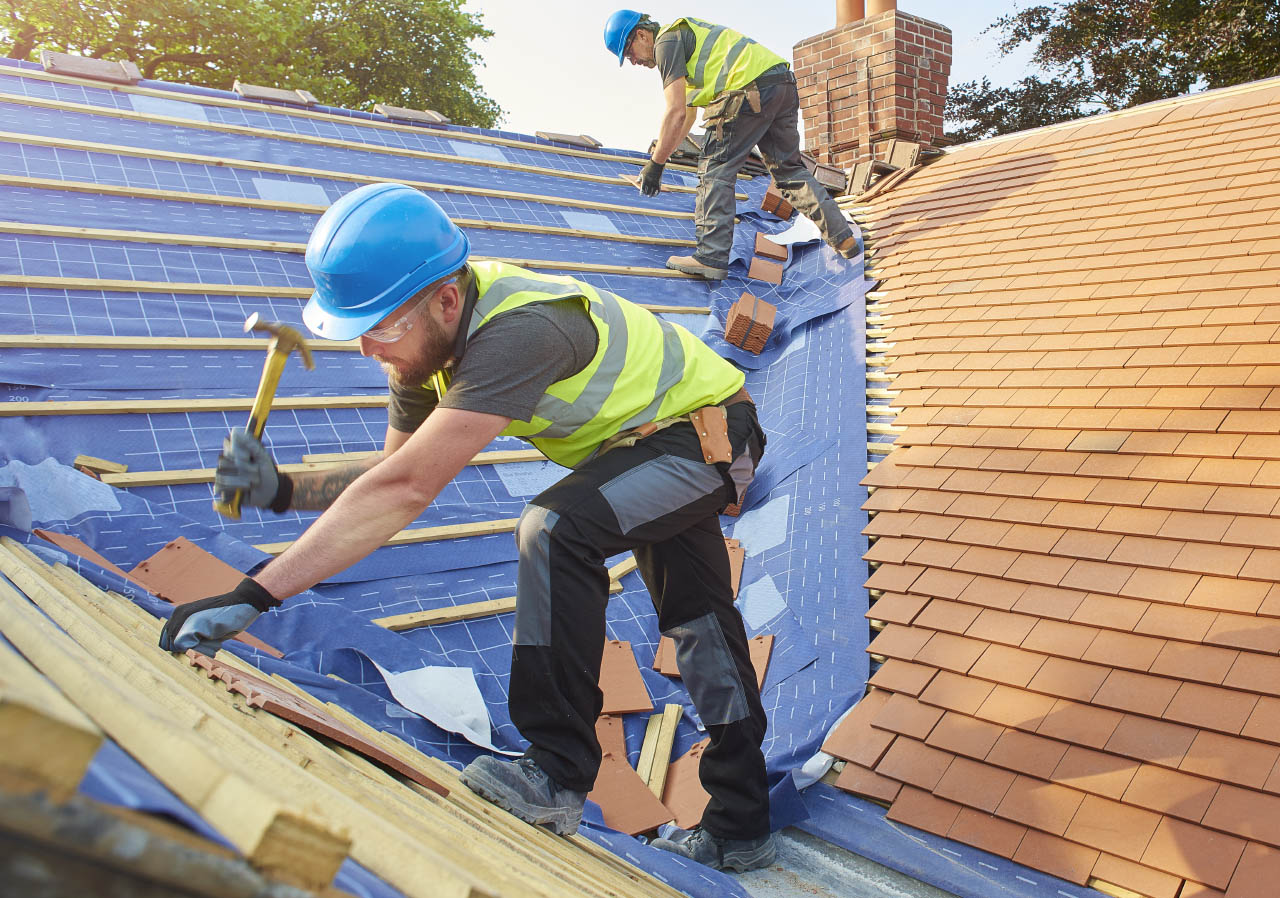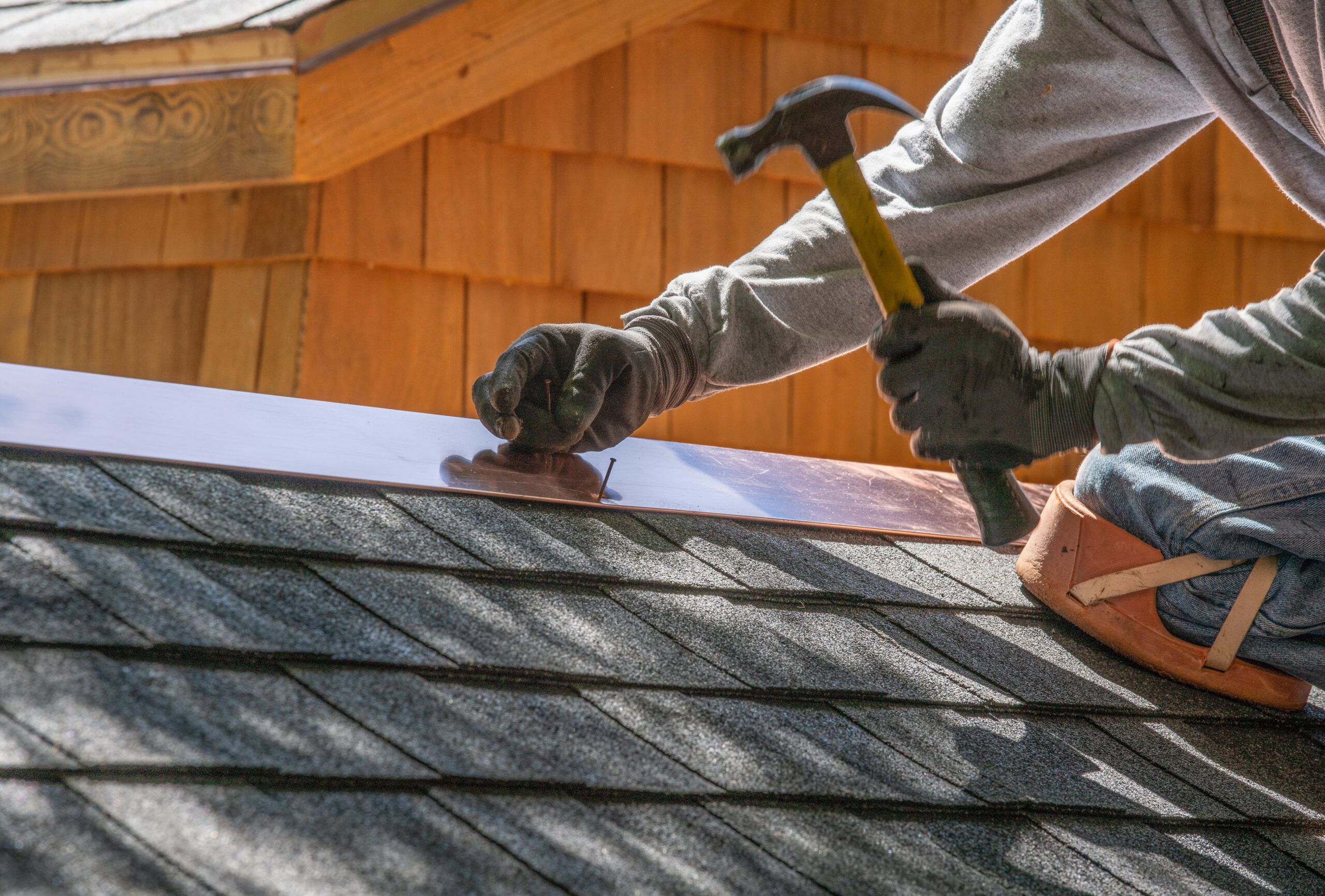Roofing Companies Oahu: Relied On Experts for Your Roofing Requirements
Wiki Article
Understanding the Various Sorts Of Roofs: A Comprehensive Overview for Homeowners
With a selection of choices-- ranging from the traditional gable to the modern level-- each type provides one-of-a-kind benefits and challenges that need to align with the home owner's specific requirements and environmental factors to consider. As we discover the complexities of different roof covering kinds, it comes to be evident that one size does not fit all; the right option may amaze you.Gable Roofing Systems
Saddleback roofs, identified by their triangular shape, are among one of the most prominent roof designs because of their simplicity and performance in shedding water and snow. This layout includes two sloping sides that meet at a ridge, enabling reliable drainage and lessening the risk of water accumulation. The steep pitch generally associated with saddleback roofs enhances their ability to take care of hefty precipitation, making them appropriate for different environments.In enhancement to their sensible benefits, saddleback roofs use aesthetic flexibility. They can be adapted to different building styles, from traditional to contemporary homes. The design can additionally accommodate extra attributes such as dormer home windows, which enhance natural light and ventilation in the attic room.
Furthermore, saddleback roofs provide adequate room for insulation, adding to power efficiency. House owners can select from a range of roof covering products, including asphalt shingles, metal, and ceramic tiles, further enhancing personalization choices.
In spite of their advantages, gable roofing systems may call for added support in locations vulnerable to high winds or hefty snowfall. On the whole, the saddleback roof remains a popular option due to its blend of performance, resilience, and aesthetic charm.
Flat Roofs
Flat roofings are typically recognized for their minimalist design and sensible applications, especially in commercial and industrial settings (oahu roofing). These roof coverings feature a almost horizontal or straight surface, which allows for simple construction and flexible area use. While they may lack the visual charm of angled roofs, level roofings use many advantages, especially in urban settings where taking full advantage of area is criticalOne of the primary benefits of level roofing systems is their ease of access. Property owners can make use of the roofing room for various functions, such as rooftop yards, balconies, or photovoltaic panel installments. In addition, flat roofs are generally more cost-efficient to set up and maintain contrasted to their sloped counterparts, as they call for fewer materials and labor.
However, flat roofs do present particular challenges. Appropriate drainage is essential to stop water pooling, which can cause leaks and architectural damages. Thus, picking high-quality waterproofing products and regular assessments are important for guaranteeing longevity. Common products utilized for flat roof coverings consist of built-up roofing (BUR), modified asphalt, and single-ply membranes, each offering distinct benefits. In general, level roof coverings act as a practical and versatile selection for many house owners and businesses alike.
Hip Roofings
Hip roofing systems are characterized by their sloped sides that merge on top, creating a ridge. This style stands out from gable roofs, as all 4 sides of a hip roof slope downwards towards the wall surfaces, giving an extra secure framework. The angle of the inclines can vary, enabling convenience in building appearances and performance.One of the primary benefits of hip roofings is their capability to endure heavy winds and negative weather condition conditions. The sloped surfaces enable better water drainage, decreasing the risk of leaks and water damages. Furthermore, hip roofing systems offer boosted attic room, which can be used for storage space and even exchanged comfortable locations.
Nevertheless, constructing a hip roof covering can be a lot more pricey and complex than easier roof covering kinds, such as gable roofs. The extra product and labor entailed in creating the slopes and ensuring correct architectural integrity can cause greater costs. Regardless of these disadvantages, several house owners favor hip roofings for their sturdiness, visual appeal, and capacity for power efficiency.
Mansard Roofings
Mansard roofs, typically identified by their unique four-sided style, attribute two slopes on each side, with the reduced incline being steeper than the upper. This architectural design, stemming from France in the 17th century, is not just aesthetically attractive however useful, as it makes best use of the usable area in the top floorings of a structure. The high reduced incline enables more headroom, making it an ideal option for lofts or attic rooms, which can be converted into living spaces.Mansard roofing systems are defined by their adaptability, suiting various architectural designs, from typical to modern-day. They can be created with various products, consisting of asphalt tiles, slate, or steel, supplying house owners with an array of alternatives to fit their preferences and budget plans. Furthermore, the design enables the assimilation of dormer windows, boosting all-natural light and air flow in the upper levels.
Nonetheless, it is vital to think about the prospective disadvantages. Mansard roof coverings may call for more maintenance due to the intricacy of their layout, and their steep slopes can be testing for snow and rainfall runoff. Overall, mansard roof coverings incorporate sophistication with practicality, making them a popular selection among homeowners looking for unique architectural attributes.
Dropped Roofing Systems
As homeowners significantly seek simpleness and functionality in their building styles, lost roofings have arised as a popular selection. Characterized by a solitary sloping plane, a shed roof covering provides a minimal aesthetic that enhances different home designs, from contemporary to rustic.One of the key advantages of a shed roofing is its uncomplicated construction, which commonly translates to lower labor and material prices. This layout allows for effective water drain, reducing the danger of leaks and water damages. In addition, the vertical slope offers adequate room for skylights, boosting natural light within the interior.
Shed roofings additionally supply versatility in terms of usage. They can be efficiently integrated right into enhancements, garages, or exterior frameworks like sheds and structures. Additionally, this roofing system style can suit different roofing products, consisting of steel, asphalt shingles, and even environment-friendly roofing systems, aligning with environment-friendly campaigns.
Nonetheless, it is important to consider regional environment problems, as hefty snow tons may require modifications to the roofing system's angle or structure. Overall, shed roof coverings offer a sensible and cosmetically pleasing option for home owners aiming to maximize capability without jeopardizing style.
Conclusion


Gable roof coverings, characterized by roofing oahu their triangular shape, are amongst the most prominent roofing styles due to their simpleness and efficiency in losing water and snow. oahu roofing. The steep pitch typically connected with gable roofing systems enhances their capability to handle heavy precipitation, making them suitable for various environments
While they might lack the visual appeal of pitched roofing systems, level roof coverings offer various advantages, specifically in city settings where taking full advantage of area is critical.

Report this wiki page